April 3 - 9, 2022: Issue 533
Long-Billed Corella
The long-billed corella or slender-billed corella (Cacatua tenuirostris) is a cockatoo native to Australia, which is similar in appearance to the little corella. This species is mostly white, with a reddish-pink face and forehead, and has a long, pale beak, which is used to dig for roots and seeds. It has reddish-pink feathers on the breast and belly.
.jpg?timestamp=1648584010745)
The long-billed corella does not have any recognised subspecies. The first formal written description was by German naturalist Heinrich Kuhl in 1820. It is one of several related species of cockatoos called corellas and classified in the subgenus Licmetis within the genus Cacatua, members of which are known as "white cockatoos".
The adult long-billed corella measures from 38 to 41 cm in length, has a wingspan around 80–90 cm, and averages 567 g in weight. It has a long, bone-coloured beak, and a rim of featherless, bluish skin around the eyes. The plumage is predominantly white with reddish feathers around the eyes and lores. The underside of the wings and tail feathers are tinged with yellow.
The long-billed corella can be found in the wild in Victoria and south-eastern New South Wales. It has extended its range since the 1970s into Melbourne, Victoria and can now be found in Tasmania, South Australia and southeast Queensland. A transplanted population resides in Perth, Western Australia as of the mid-1980s, which has conservation implications as this species may hybridize with the endangered western corella.
The long-billed corella is found in grassy woodlands and grasslands, including pasture, fields of agricultural crop, and urban parks.
Breeding generally takes place in Austral winter to spring (from July to November). Long-billed corellas form monogamous pairs and both sexes share the task of building the nest, incubating the eggs, and caring for the young. Nests are made in decayed debris, the hollows of large old eucalypts, and occasionally in the cavities of loose gravely cliffs. Around 2–3 dull white, oval eggs are laid on a lining of decayed wood. The incubation period is around 24 days and chicks spend about 56 days in the nest.
The long-billed corella typically digs for roots, seeds, corms, and bulbs, especially from the weed onion grass. Native plants eaten include murnong Microseris lanceolata, but a substantial portion of the bird's diet now includes introduced plants.
The call of the long-billed corella is a quick, quavering, falsetto currup!, wulluk-wulluk, or cadillac-cadillac combined with harsh screeches.
Long-billed corellas are now popular as pets in many parts of Australia, although they were formerly uncommon, and their captive population has stabilised in the last decade. This may be due to their ability to mimic words and whole sentences to near perfection. The long-billed corella has been labelled the best "talker" of the Australian cockatoos, and possibly of all native Psittacines.
.jpg?timestamp=1648584436823)
Information: BirdLife Australia. Photos: A J Guesdon, March 29, 2022, Careel Bay
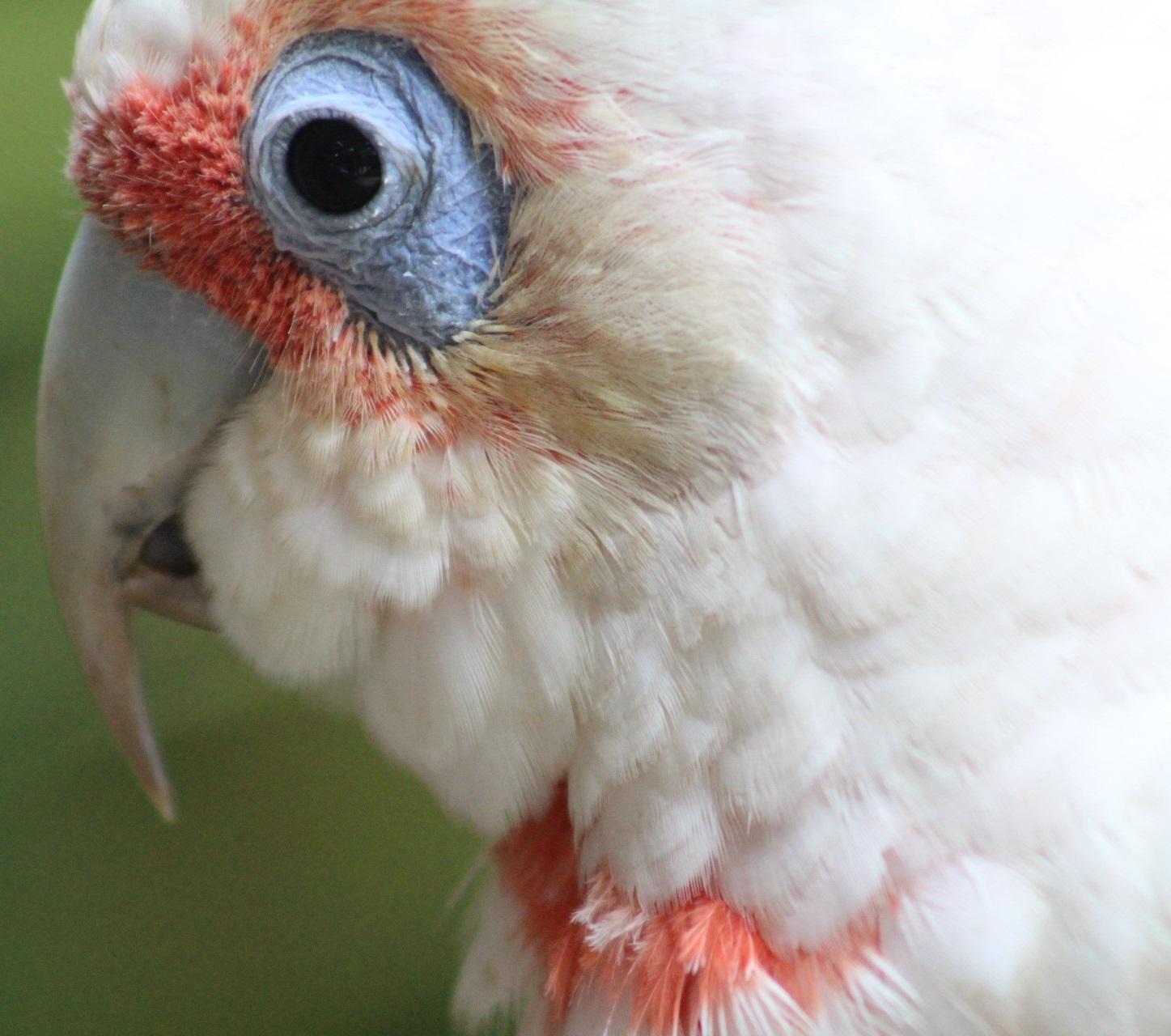
Sulphur-Crested Cockatoo Mucking About
Spotted at Careel Bay this week - Like all parrots, cockatoos are zygodactyl (of a bird's feet; having two toes pointing forward and two backward). This, along with the use of their beak, gives them the ability to use their feet much like we use our hands and helps make them terrific climbers! Having the ability to climb is a necessity for birds that live and nest in thick forests. It’s hard to fly through dense, leafy branches, and even tougher to get to the fruit or nuts that are their primary foods, but because cockatoos can climb through tree branches so well, they can easily get to the treats they want. These birds are also able to hold their food in one foot while balancing on the other.
The Sulphur-crested Cockatoo's normal diet consists of berries, seeds, nuts and roots. It also takes handouts from humans. Feeding normally takes place in small to large groups, with one or more members of the group watching for danger from a nearby perch.
Cockatoos often “play” with each other, performing intricate aerial manoeuvres or crazy antics, such as hanging upside down while perched, just for the “fun” of it - as this one was this week! These activities serve as a form of exercise for the birds, and strengthen social bonds. - Info: BirdLife Astralia
.jpg?timestamp=1648774048876)
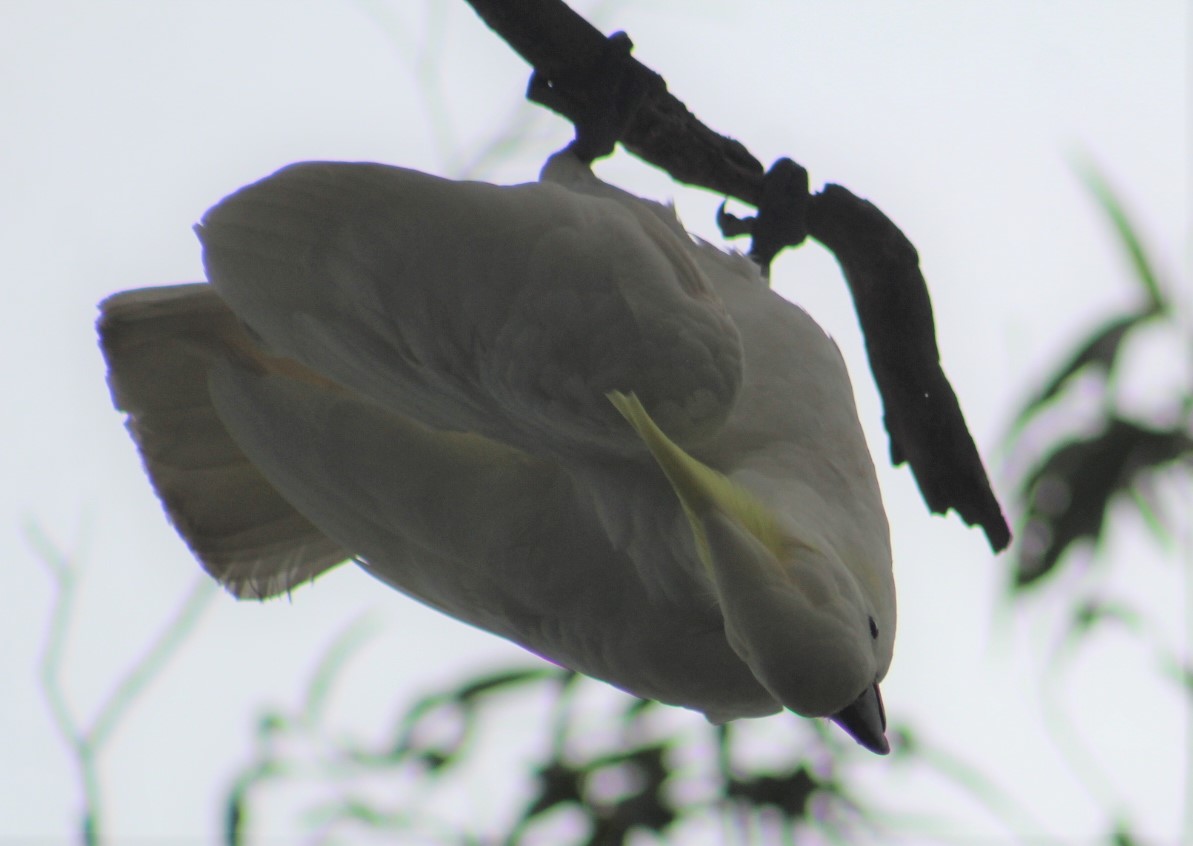
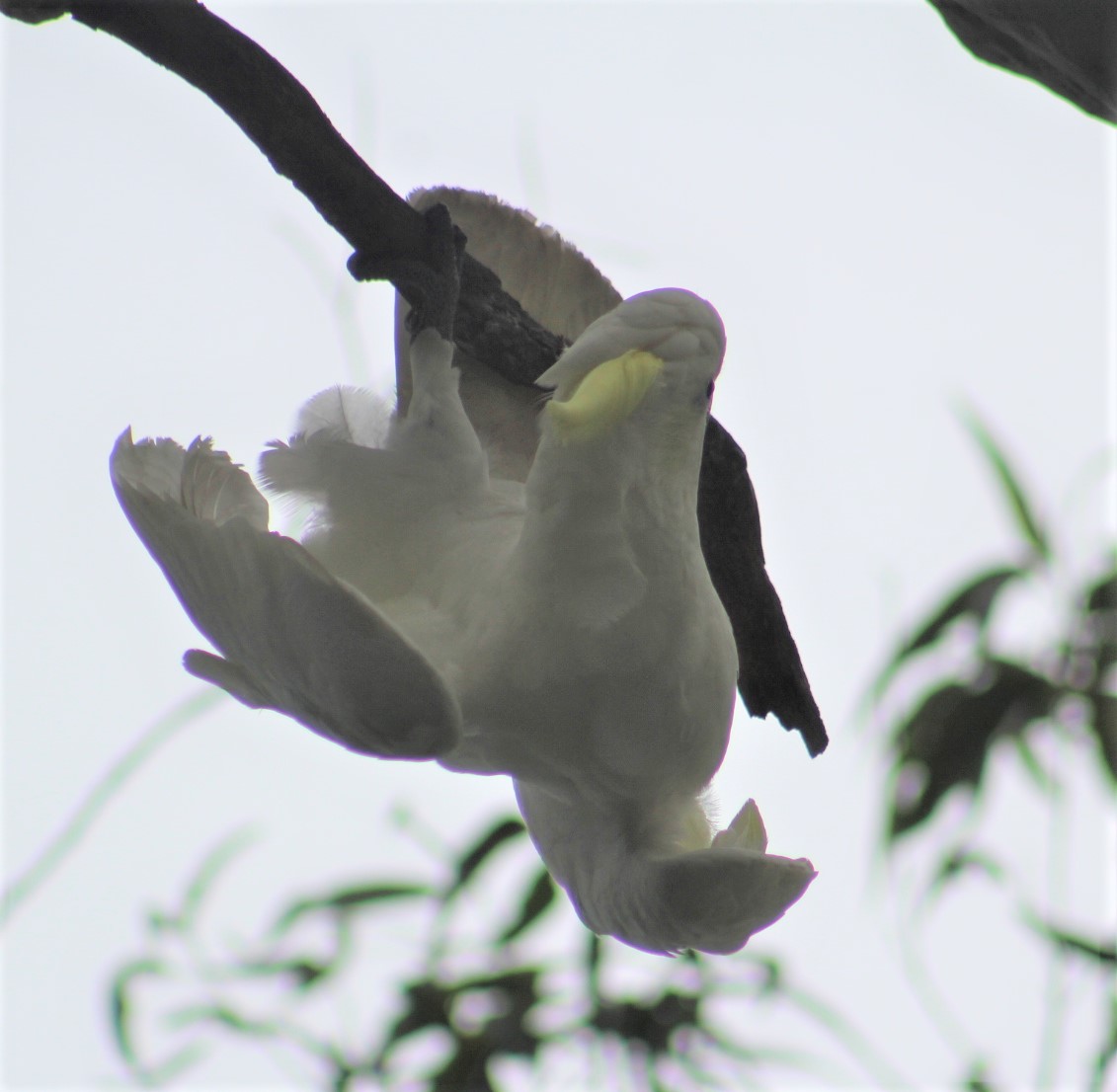
.jpg?timestamp=1648774149347)
.jpg?timestamp=1648774178595)
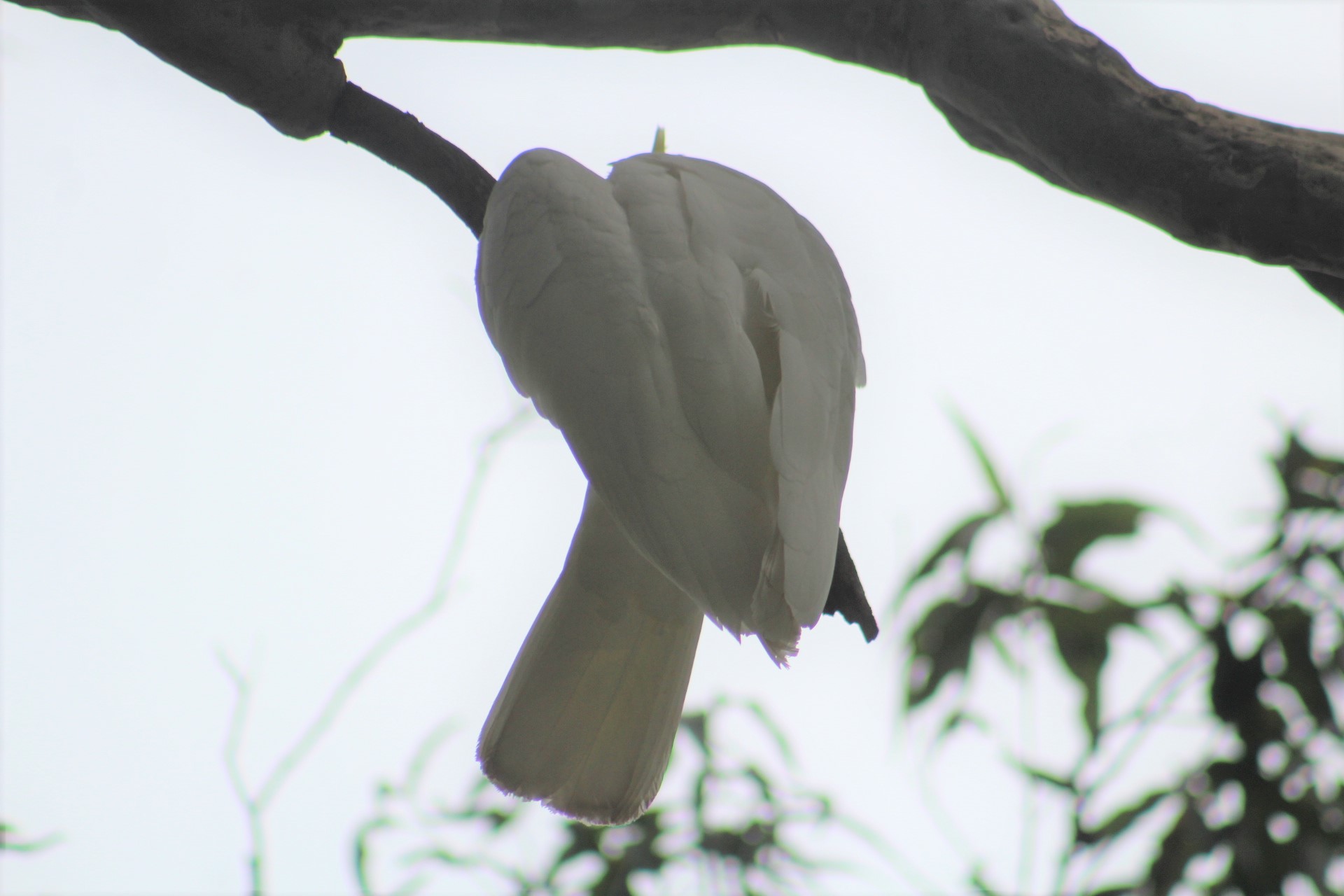
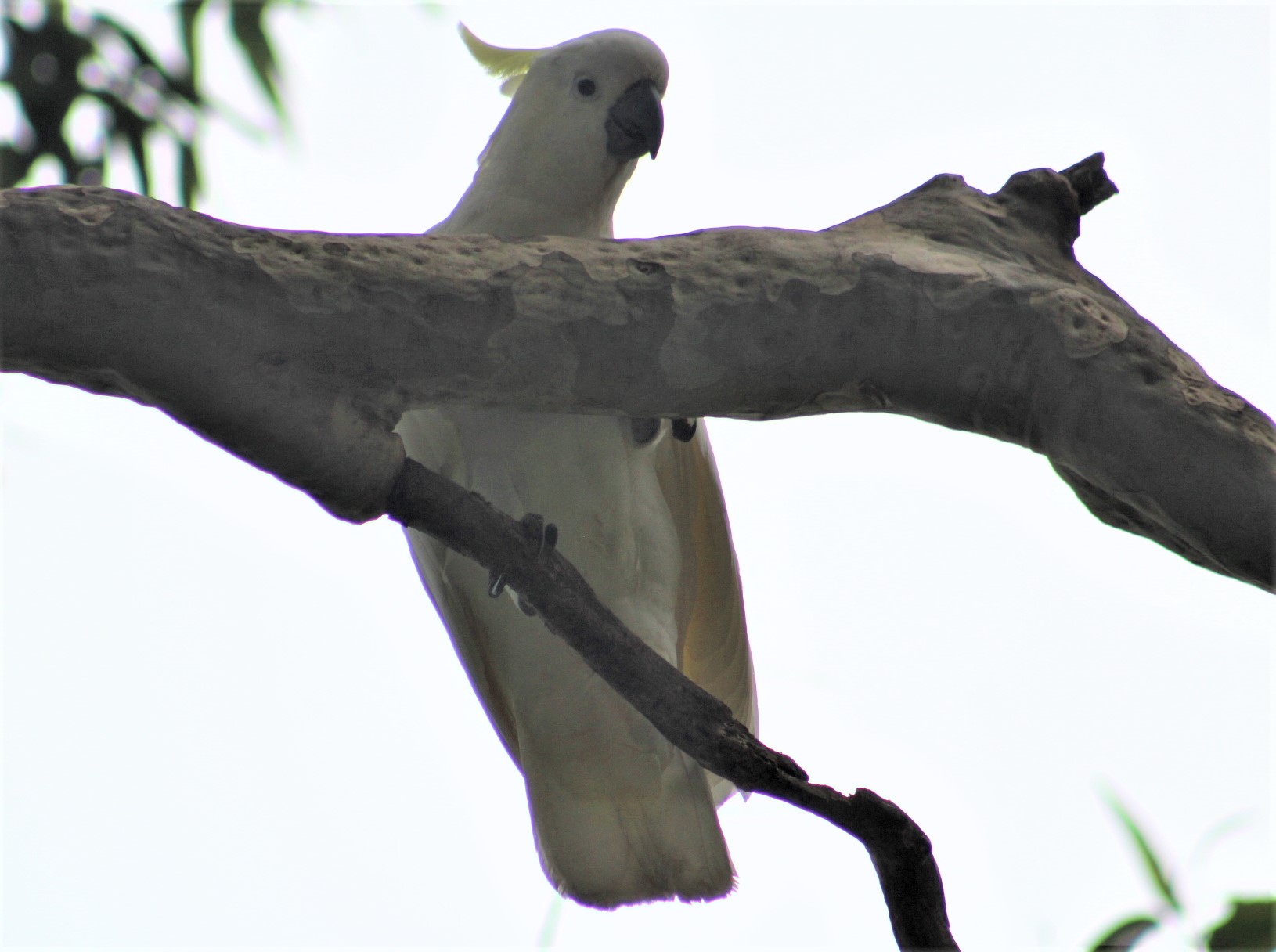
Photos: A J Guesdon, March 29, 2022